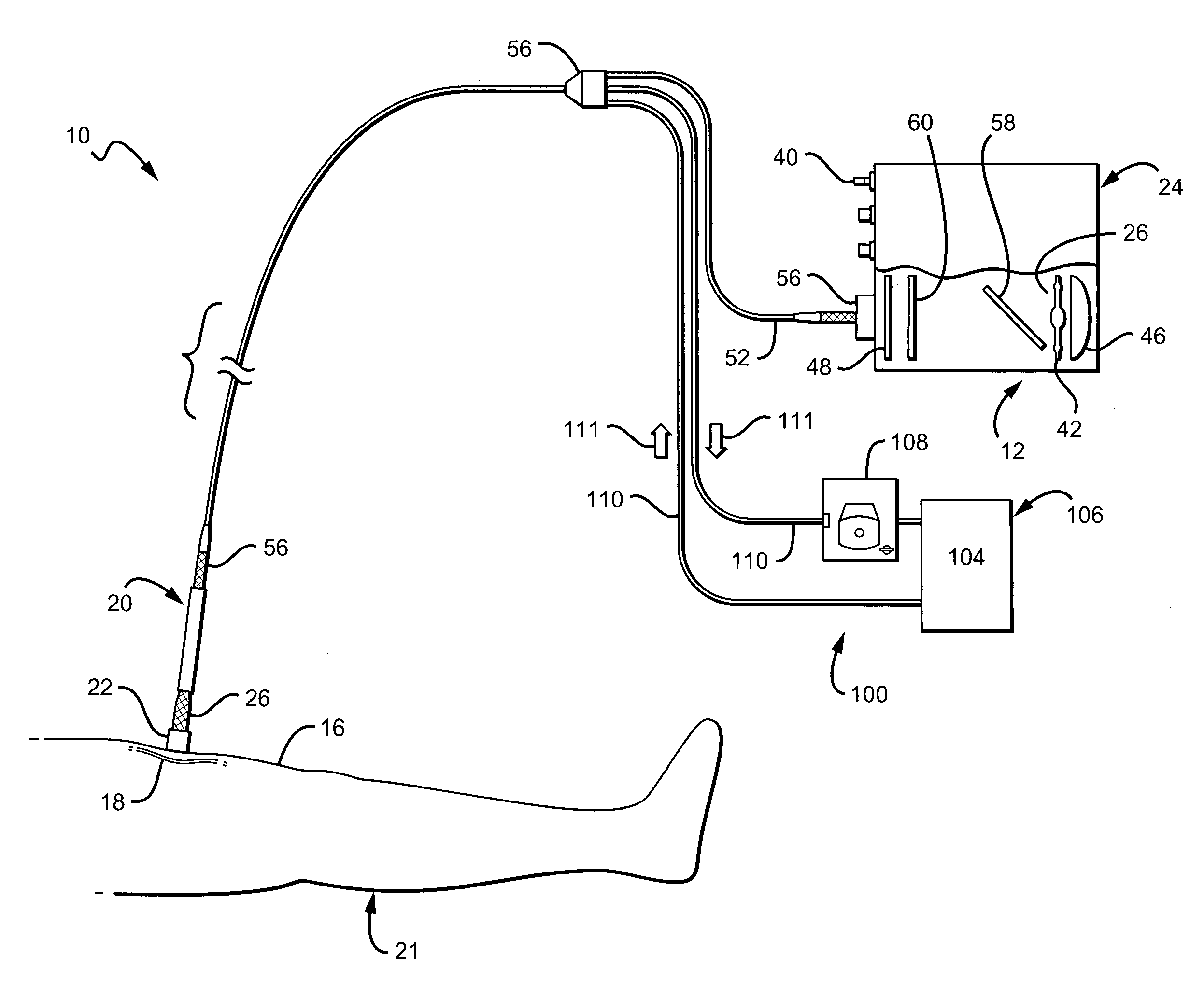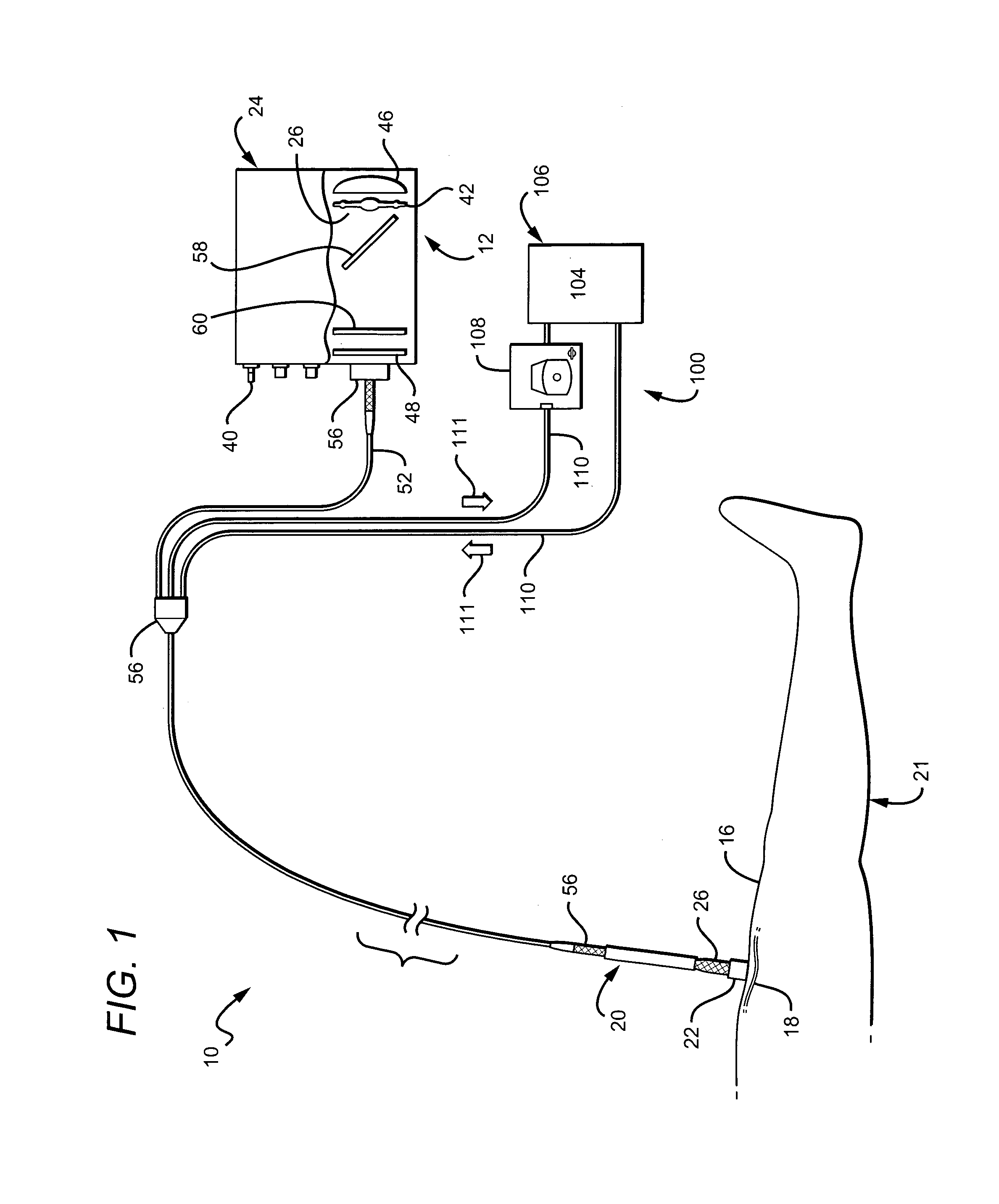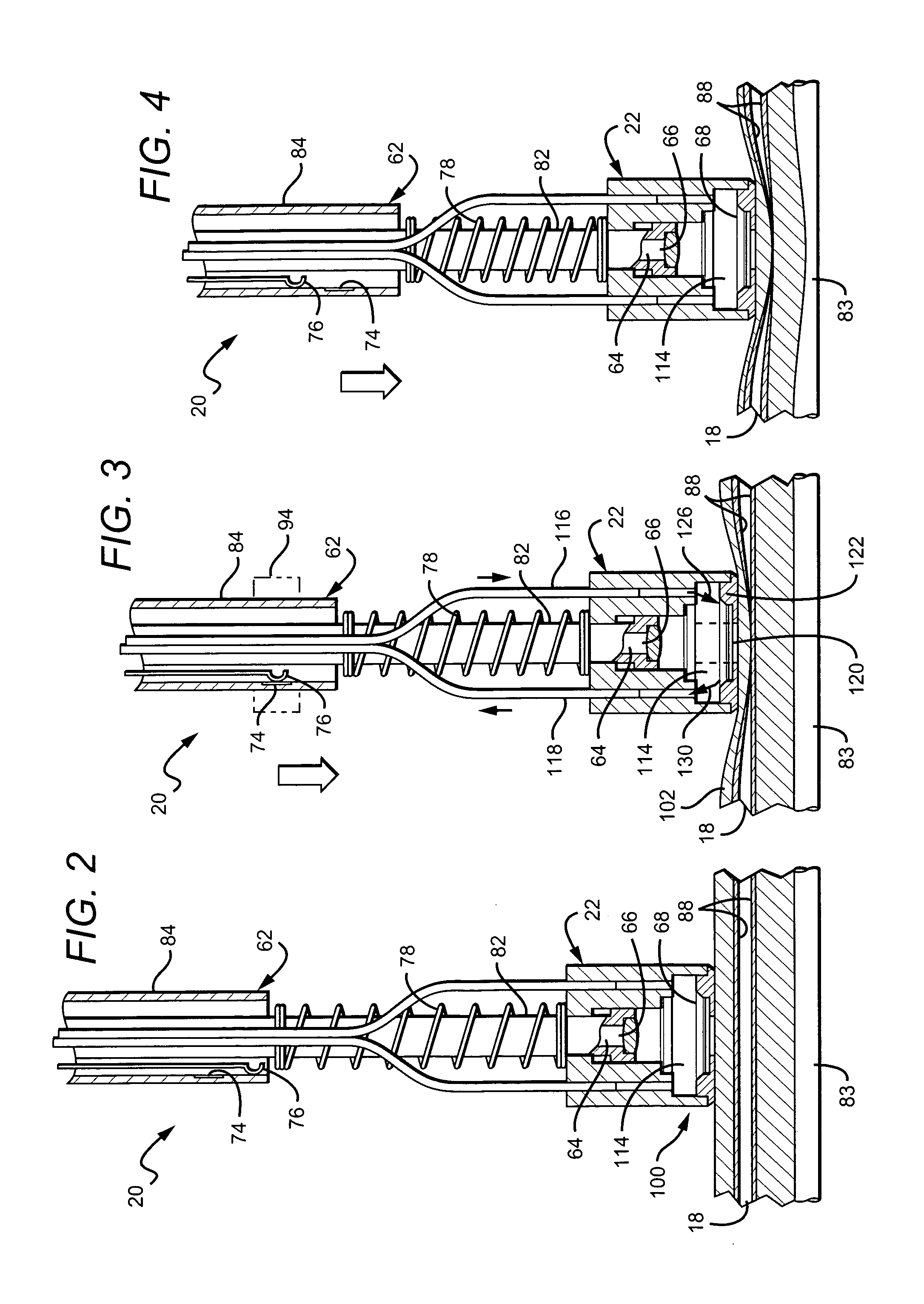Vascular occlusion systems and methods
a vascular occlusion and non-invasive technology, applied in the field of medical devices and cosmetic procedures, can solve the problems of increased risk of ulceration, so as to improve the control of light transmission, prevent thermal damage to skin and peripheral tissues, and simplify the optical path
- Summary
- Abstract
- Description
- Claims
- Application Information
AI Technical Summary
Benefits of technology
Problems solved by technology
Method used
Image
Examples
Embodiment Construction
[0038]Referring now to FIG. 1, a blood vessel treatment apparatus, in accordance with the present invention, is shown generally at 10, comprising a power source 12 for transmitting energy transcutaneously through a body surface 16 and in proximity to a target blood vessel 18, and preferably into target blood vessel 18, for example a varicose vein in a human leg 21. The apparatus 10 preferably includes a handheld probe, or handpiece 20, including a distal end region, hereinafter referred to as a probe head 22, for contacting the body surface 16, and a controller 24 operatively connected thereto.
[0039]As will be described in greater detail hereinafter, the source 12 of energy preferably includes an energy source configured to emit a sufficient amount of energy to couple two opposing sidewalls of a blood vessel together to occlude the flow of blood therethrough. In the illustrated embodiment, power source 12 includes a visible light source 26. It is to be appreciated, however, that wit...
PUM
 Login to View More
Login to View More Abstract
Description
Claims
Application Information
 Login to View More
Login to View More - R&D
- Intellectual Property
- Life Sciences
- Materials
- Tech Scout
- Unparalleled Data Quality
- Higher Quality Content
- 60% Fewer Hallucinations
Browse by: Latest US Patents, China's latest patents, Technical Efficacy Thesaurus, Application Domain, Technology Topic, Popular Technical Reports.
© 2025 PatSnap. All rights reserved.Legal|Privacy policy|Modern Slavery Act Transparency Statement|Sitemap|About US| Contact US: help@patsnap.com



